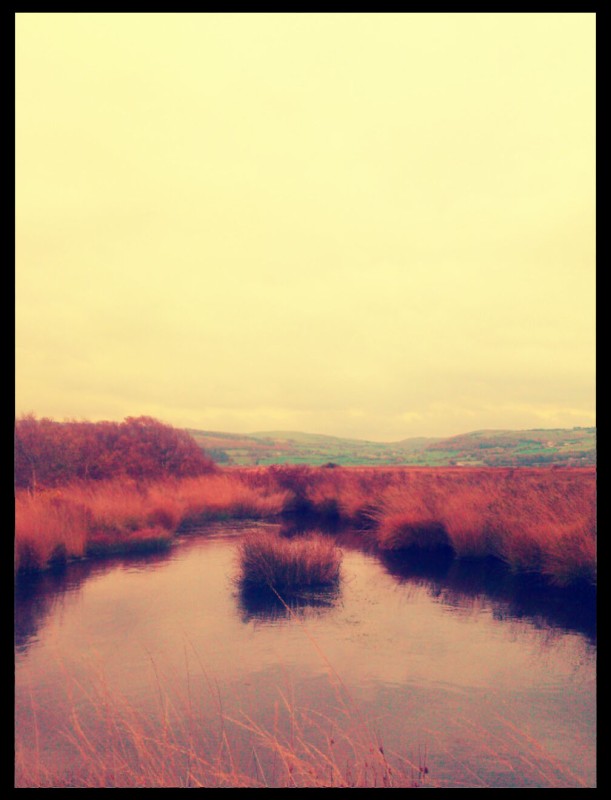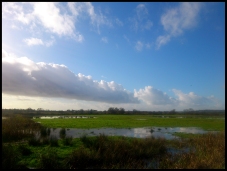November 5th, 2014. After two field trips to peatlands, this time our field-course had a marsh land for us. A marsh is a frequently, or continually inundated wetland characterised by emergent herbaceous vegetation adapted to saturated soil conditions.
It was a good day with clear skies, something that hadn’t been there during our previous field trips. We reached Malltraeth Marsh around 11:00 am. Malltraeth Marsh is a site under the Royal Society for Protection of Birds (RSPB), Wales. We met the RSPB manager of the site and were given an introduction of the site. The 273 ha of this area sustains reedbeds, marshes, grasslands and small lakes/pools. RSPB manages this site to make it a habitat fit for bitterns. Bitterns prefer habitats that are rich in reedbeds. The marsh is also popular for lapwings and for seeing wintering wildfowls. The site, in the past has had a history of coal mining. As a consequence of the mining, several depressions were formed which later developed into shallow pools. A lot of effort has been put to bring back the bittern population, e.g., ditches are created with fish in them, but there haven’t been breeding pairs on the site. Malltraeth marsh also endeavours to raise lapwings in breeding numbers and prevent them from being prayed by foxes; electric fences have been set up to check foxes. Buttercup, Ranunculus Sp. and Soft Rush, Juncus effusus along with Cattail, Typha were also noticed.
We visited two sites at the reserve; first one showed the history of mining and had pools of water and the second site was basically dominated by reedbeds. The two sites were visibly different with one being quite wet while the other being drier and pasture-land like, with evidence of pony grazing. We continued with our sampling drill – collected five samples from each of the sites, and also took water sample from the second site.




